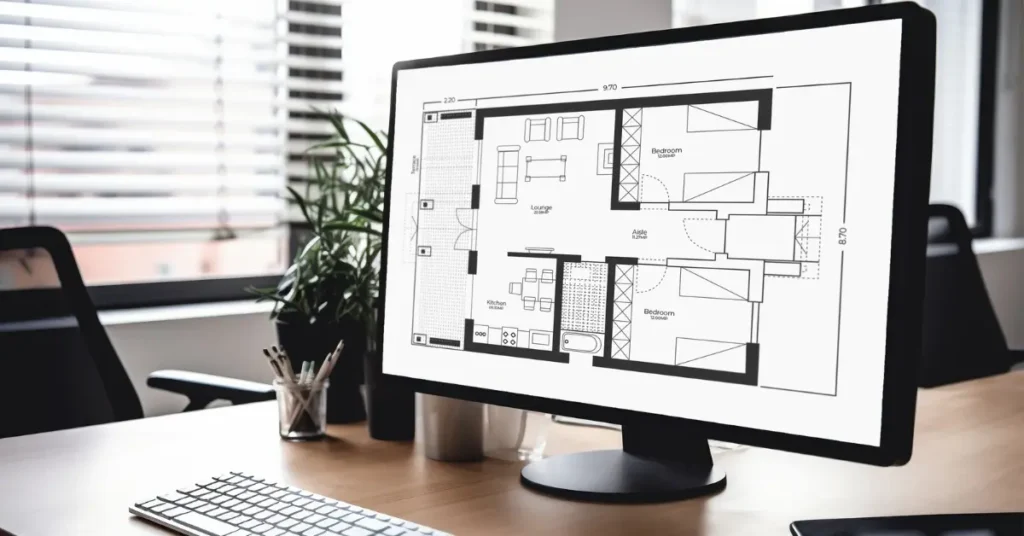Enhancing Models with Crisp: Clean Line Work in SketchUp and Layout

Creating professional-grade presentations in SketchUp and Layout demands more than just drafting skills; it requires mastering the art of clean line work. Whether you’re an architect, interior designer, or engineer, conveying your ideas with precision and elegance is paramount. In this comprehensive guide, we’ll delve into the intricacies of achieving clean line work in SketchUp and Layout, ensuring your projects stand out with professionalism and clarity.
1. The Foundation: Setting Up Your SketchUp Model
Start with Organization:
Begin your project by establishing a robust organizational structure within SketchUp. Utilize layers (tags in SketchUp 2020 and later) and groups meticulously. This initial step lays the groundwork for managing visibility and maintaining the cleanliness of your line work as your design progresses.
Use Section Planes Strategically:
For intricate designs requiring detailed views, leverage section planes to cut through your model. This technique allows you to showcase specific aspects of your design with clarity, eliminating unnecessary clutter and enhancing the overall presentation.
2. Mastering Line Work in SketchUp
Creating Components for Line Work:
Convert crucial elements of your design into components. This not only streamlines the editing process but also ensures consistency in your line work across different sections of your model.
Editing for Cleanliness:
Refine your model by meticulously editing components to eliminate unnecessary details. Simplifying the geometry highlights essential aspects of your design, resulting in cleaner and more readable line work.
3. Transitioning to Layout
Exporting Scenes:
Set up scenes in SketchUp to capture each view you intend to present in Layout. Pay close attention to visibility settings to ensure that exported scenes maintain clean and clear line work.
Overlaying Line Work in Layout:
In Layout, utilize layers to manage various elements of your presentation effectively. Place your SketchUp model as the base layer and overlay it with additional layers for annotations and enhanced line work. This layered approach grants you greater control and precision over your final presentation.
4. Vector Rendering for Precision
Vector Render Line Work:
Opt for vector rendering in Layout to achieve unparalleled clarity and precision in your line work. Adjust line weight and style as needed to differentiate between different elements of your design, enhancing visual comprehension.
5. Efficient Updates and Collaboration
Managing Changes:
Keep your presentations up-to-date by synchronizing SketchUp model updates with Layout. Utilize Layout’s “Update Model Reference” feature to ensure that line work and annotations accurately reflect the latest changes in your design.
Exporting for Consultants:
When collaborating with consultants or stakeholders, export your clean line work directly from Layout as DWG or DXF files. This facilitates seamless communication and ensures that recipients receive precise and easily interpretable drawings aligned with your design intent.
Going Beyond: Advanced Techniques for Clean Line Work
1. Utilizing Plugins:
Explore the vast array of plugins available for SketchUp to streamline your workflow and enhance line work quality. Plugins like “CleanUp³” help eliminate unnecessary geometry and ensure a tidy model, while “Skalp” offers advanced tools for creating detailed, clean section cuts.
2. Leveraging Styles:
Experiment with different styles and line settings in SketchUp to achieve the desired aesthetic for your presentation. Customizing line weights, styles, and endpoints can significantly impact the clarity and visual appeal of your line work.
3. Mastering Layout Tools:
Take full advantage of Layout’s tools and functionalities to refine your presentations further. Practice using features like dimensioning tools, text annotations, and drawing scales to add context and detail to your line work.
4. Implementing Advanced Rendering:
Explore advanced rendering techniques to enhance the visual quality of your presentations. Utilize rendering software such as V-Ray or Lumion to create photorealistic renders with crisp, clean line work, elevating the overall presentation to new heights.
5. Continuous Learning and Improvement:
Stay updated with the latest trends and developments in SketchUp and Layout. Participate in online forums, attend workshops, and explore tutorials to expand your knowledge and refine your skills in achieving clean line work.
Case Study: Applying Clean Line Work in Architectural Visualization
Introduction:
In this case study, we’ll examine how clean line work techniques were applied to enhance an architectural visualization project using SketchUp and Layout.
Project Overview:
The project involved creating a detailed architectural model of a residential building, including interior and exterior spaces, landscaping, and site context.
Implementation:
- Organizational Strategy: The model was meticulously organized using layers and groups, ensuring that each component was properly categorized for easy management.
- Section Planes: Strategic use of section planes allowed for the creation of detailed interior views without cluttering the overall model.
- Component Editing: Components were edited to remove unnecessary details and optimize geometry for clean line work, focusing on highlighting key design elements.
- Layout Integration: Scenes were exported from SketchUp to Layout, where additional annotations and line work enhancements were applied using layers and vector rendering.
- Collaboration and Updates: The model was regularly updated to reflect design changes, with Layout’s update feature ensuring that line work and annotations remained accurate throughout the project lifecycle.
Results:
The implementation of clean line work techniques resulted in a visually compelling presentation that effectively communicated the design intent. The clarity and precision of the line work enhanced the overall readability of the presentation, allowing stakeholders to visualize the project with accuracy and confidence.
Conclusion
Mastering the art of clean line work in SketchUp and Layout is a journey that requires dedication, practice, and continuous learning. By implementing advanced techniques, leveraging available tools, and maintaining a keen eye for detail, you can elevate your presentations to professional standards and leave a lasting impression on your audience. Embrace the challenge, explore new possibilities, and let your creativity shine through in every project you undertake.












